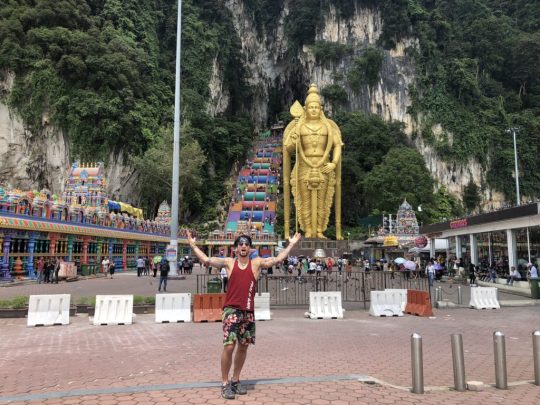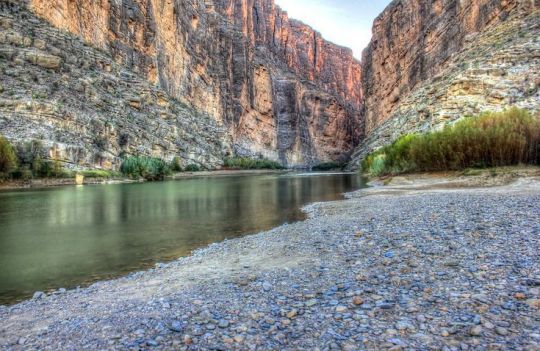Text
Finding the Ideal Time to Explore Kuala Lumpur, Malaysia

Kuala Lumpur, the vibrant capital city of Malaysia, is a melting pot of cultures, cuisines, and architectural wonders. From towering skyscrapers to bustling street markets, there's something for every traveler in this dynamic metropolis. However, to make the most of your visit, it's essential to consider the best time to explore Kuala Lumpur. Let's delve into the factors that influence the ideal timing for your trip.
Weather Considerations: Kuala Lumpur experiences a tropical rainforest climate, characterized by hot and humid conditions throughout the year. The city receives rainfall almost daily, but the intensity varies across different months. The dry season, from May to September, offers relatively clearer skies and lower precipitation levels, making it an ideal time for outdoor activities and sightseeing.
Avoiding the Monsoon Season: The wet season in Kuala Lumpur typically occurs from October to March, with November and December being the wettest months. Heavy rainfall during this period may disrupt outdoor plans and sightseeing, leading to inconvenience for travelers. Thus, it's advisable to avoid visiting Kuala Lumpur during the peak of the monsoon season to ensure a more enjoyable experience.
Festivals and Events: Kuala Lumpur hosts a myriad of cultural festivals, events, and celebrations throughout the year, offering visitors a chance to immerse themselves in the local culture and traditions. From the colorful Thaipusam festival at Batu Caves to the dazzling Chinese New Year festivities in Chinatown, each event adds a unique flavor to the city's vibrant atmosphere. Planning your visit to coincide with these festivals can provide an enriching cultural experience.
Peak Tourist Seasons: The influx of tourists in Kuala Lumpur tends to peak during certain periods, such as school holidays and major events. The months of December and January, as well as July and August, witness a surge in tourist arrivals, leading to crowded attractions and higher accommodation rates. Travelers seeking a more relaxed atmosphere may opt to visit during the shoulder seasons, such as April to June and September to November.
Outdoor Activities and Excursions: If you're interested in outdoor adventures or exploring Kuala Lumpur's natural attractions, consider visiting during the dry season when weather conditions are more favorable. From hiking in the nearby rainforests to exploring the city's parks and gardens, the dry months offer ample opportunities for outdoor pursuits without the threat of sudden downpours.
Budget and Travel Deals: Timing your visit to Kuala Lumpur can also impact your travel expenses, as accommodation rates and airfare prices may vary depending on the season. By researching and booking in advance, you can take advantage of early bird discounts and special promotions, allowing you to enjoy a budget-friendly trip to the Malaysian capital.
Conclusion: Choosing the best time to visit Kuala Lumpur involves considering various factors, including weather patterns, cultural events, and tourist trends. Whether you prefer to explore the city's iconic landmarks, indulge in culinary delights, or immerse yourself in its vibrant culture, planning your trip accordingly can enhance your overall experience. By understanding the nuances of Kuala Lumpur's seasons and festivities, you can embark on a memorable journey filled with exploration, discovery, and cultural immersion in this captivating metropolis.
3 notes
·
View notes
Text
Discovering Serenity Hotels Near Arunachalam Temple

Nestled amidst the majestic hills of Tamil Nadu, Arunachalam Temple stands as a symbol of spirituality and serenity. Devotees and travelers flock to this sacred site to experience its profound ambiance and seek blessings. While exploring this divine destination, finding the perfect accommodation can enhance your pilgrimage or leisure trip. Here's a guide to hotels near Arunachalam Temple, ensuring a comfortable and memorable stay.
Arunachalam Temple: A Spiritual Haven: Before delving into accommodation options, it's essential to understand the significance of Arunachalam Temple. Dedicated to Lord Shiva, this ancient temple is renowned for its architectural grandeur and spiritual aura. Situated atop the Arunachala Hill in Thiruvannamalai, it attracts devotees, ascetics, and tourists alike, seeking enlightenment and solace.
Proximity to the Temple: Several hotels and guesthouses are conveniently located near Arunachalam Temple, offering easy access to the sacred site. Opting for accommodation within walking distance ensures you can participate in early morning rituals, attend puja ceremonies, and explore the temple complex at your leisure.
Comfort and Amenities: While seeking proximity to the temple, it's crucial to prioritize comfort and amenities during your stay. Many hotels near Arunachalam Temple cater to various budgets and preferences, ranging from simple lodges to luxurious resorts. Look for features such as spacious rooms, clean facilities, Wi-Fi connectivity, and complimentary breakfast to ensure a pleasant experience.
Spiritual Retreats and Ashrams: For those seeking a deeper spiritual immersion, several ashrams and retreat centers near Arunachalam Temple offer accommodation options. These serene retreats provide a tranquil atmosphere, daily satsangs (spiritual discourses), meditation sessions, and vegetarian meals, allowing guests to rejuvenate their mind, body, and soul.
Exploring Thiruvannamalai: Beyond the spiritual allure of Arunachalam Temple, Thiruvannamalai boasts natural beauty, historical landmarks, and cultural richness. While choosing accommodation, consider proximity to other attractions such as Girivalam Path, Sathanur Dam, and Ramana Maharshi Ashram, allowing you to immerse yourself fully in the region's charm.
Booking Tips and Recommendations: To ensure a seamless experience, it's advisable to book accommodation near Arunachalam Temple well in advance, especially during peak pilgrimage seasons and festivals. Online booking platforms, travel agencies, and direct hotel websites offer a range of options to suit your preferences and budget.
Conclusion: As you embark on a journey to Arunachalam Temple, selecting the right accommodation sets the tone for a fulfilling experience. Whether you seek proximity to the sacred site, spiritual solace, or modern comforts, hotels near Arunachalam Temple cater to diverse needs, ensuring a memorable stay amidst the tranquility of this sacred destination.
3 notes
·
View notes
Text
Indulging in Malaysia's Vegetarian Delights Best Time to Explore

Malaysia's culinary landscape is as diverse as its cultural tapestry, offering a plethora of tantalizing vegetarian dishes that cater to every palate. If you're a vegetarian traveler seeking to explore Malaysia's culinary gems, timing your visit can enhance your gastronomic journey. Let's delve into the best time to indulge in Malaysia's vegetarian delights.
1. Weather and Seasonal Produce: Understanding Malaysia's weather patterns can provide insight into the availability of fresh, locally sourced ingredients.
Dry Season (May to September): This period sees an abundance of seasonal fruits and vegetables, ensuring a variety of fresh produce for vegetarian dishes. Explore bustling markets and street food stalls to savor the flavors of locally sourced ingredients.
Wet Season (November to March): While rain showers may be more frequent, wet markets still offer a vibrant array of fruits and vegetables. Embrace the opportunity to sample seasonal specialties and traditional vegetarian dishes during this time.
2. Festivals and Vegetarian Cuisine: Malaysia's festivals offer a unique opportunity to immerse yourself in vegetarian culinary traditions.
Thaipusam (January/February): Celebrate this Hindu festival with a visit to the Batu Caves, where vegetarian offerings are abundant. Indulge in flavorful South Indian dishes such as dosas, idlis, and sambar.
Nine Emperor Gods Festival (October): Join in the festivities of this Taoist celebration, where vegetarianism is practiced by devotees. Explore vegetarian street food stalls offering a wide array of plant-based delicacies.
3. Exploring Vegetarian-Friendly Destinations: Certain regions in Malaysia are renowned for their vegetarian-friendly culinary scene, catering to discerning palates.
Penang: Known as a food haven, Penang boasts a plethora of vegetarian eateries offering diverse cuisines, including Chinese, Indian, and Malay.
Kuala Lumpur: The capital city is a melting pot of culinary diversity, with numerous vegetarian restaurants and street food vendors serving up delectable dishes from around the world.
4. Local Vegetarian Festivals: Participating in vegetarian festivals provides a unique opportunity to experience Malaysia's cultural and culinary heritage.
Penang International Vegetarian Festival (September/October): Immerse yourself in a gastronomic extravaganza featuring vegetarian street food, cooking demonstrations, and cultural performances.
Melaka VegFest (July/August): Discover a wide range of vegetarian and vegan delights at this annual festival celebrating plant-based cuisine and sustainable living.
Conclusion: Best Time to Visit Malaysia a devout vegetarian or simply seeking to explore Malaysia's vibrant culinary scene, timing your visit can enhance your gastronomic adventure. By considering weather patterns, festival seasons, and vegetarian-friendly destinations, you can embark on a flavorful journey through Malaysia's diverse vegetarian delights. So pack your appetite, explore with an open mind, and prepare to be tantalized by the rich
3 notes
·
View notes
Text
Arunachalam Temple A Sanctum of Spiritual Serenity

Nestled amidst the picturesque landscape of the Eastern Ghats in the southern state of Tamil Nadu, India, the Arunachalam Temple stands as a revered symbol of devotion, architecture, and cultural heritage. Dedicated to Lord Shiva, this ancient temple complex has attracted pilgrims and tourists alike for centuries, offering a glimpse into the rich tapestry of India's religious and architectural legacy.
The Arunachalam Temple, also known as the Annamalaiyar Temple, is situated in the town of Thiruvannamalai, which derives its name from the sacred hill, Arunachala, upon which the temple is perched. The hill itself is believed to be a manifestation of Lord Shiva's cosmic form, symbolizing the eternal cycle of creation and destruction. As such, the temple holds immense significance for devotees of Lord Shiva, who come here seeking spiritual solace and enlightenment.
Constructed over several centuries, the temple complex is a masterpiece of Dravidian architecture, characterized by towering gopurams (entrance towers), intricately carved mandapams (pillared halls), and ornate sculptures depicting scenes from Hindu mythology. The main sanctum sanctorum houses the principal deity, Lord Arunachaleswarar, in the form of a lingam, symbolizing the divine energy of Lord Shiva. Surrounding the main shrine are smaller shrines dedicated to various deities, adding to the spiritual aura of the temple complex.
One of the most revered rituals observed at the Arunachalam Temple is the Girivalam, a sacred circumambulation of the Arunachala hill. Pilgrims undertake this journey on foot, traversing a path of approximately 14 kilometers around the base of the hill, while chanting hymns and prayers. The Girivalam is believed to confer immense spiritual merit and is especially popular during full moon days and auspicious occasions.
Beyond its religious significance, the Arunachalam Temple holds a special place in the hearts of spiritual seekers due to its association with eminent saints and sages. The renowned sage Ramana Maharshi, whose teachings on self-inquiry and meditation have inspired millions, spent a significant portion of his life in the vicinity of Arunachala, meditating in caves and ashrams. His presence continues to imbue the temple and its surroundings with a sense of profound spirituality and tranquility.
Visitors to the Arunachalam Temple are not only drawn by its religious allure but also by the serene beauty of its surroundings. Surrounded by lush greenery and panoramic vistas of the Eastern Ghats, the temple offers a tranquil retreat from the hustle and bustle of modern life. Whether one comes seeking spiritual enlightenment or simply to admire its architectural splendor, the Arunachalam Temple never fails to leave a lasting impression on all who visit.
In a world where ancient traditions often clash with modernity, the Arunachalam Temple stands as a timeless beacon of spirituality and cultural heritage. As pilgrims and tourists continue to flock to this sacred abode, the legacy of Arunachalam endures, enriching the lives of all who come in search of divine grace and inner peace.
3 notes
·
View notes
Text
Discovering the Optimal Season: The Best Time to Experience Big Bend Texas

Nestled along the Rio Grande in the vast expanse of West Texas, Big Bend National Park stands as a testament to nature's grandeur. Spanning over 800,000 acres, this rugged wilderness offers a myriad of outdoor adventures, from hiking through towering canyons to stargazing under the vast desert sky. But when is the best time to visit this remote and awe-inspiring destination? Let's unravel the seasons of Big Bend and discover the optimal time to experience its wonders.
Spring: March to May
As winter loosens its grip and the desert begins to bloom, spring emerges as one of the prime seasons to visit Big Bend. Temperatures are mild, ranging from comfortable highs in the 70s to cooler evenings. Wildflowers carpet the desert floor in a riot of color, creating a stunning backdrop for hiking and photography. Spring also marks the peak of bird migration, making it a paradise for birdwatchers.
Summer: June to August
While summer in Big Bend brings scorching temperatures, reaching well over 100 degrees Fahrenheit, it also offers unique opportunities for adventure. For those willing to brave the heat, summer presents the chance to explore the park's trails and waterways with fewer crowds. Early mornings and late evenings provide a reprieve from the intense sun, allowing visitors to experience the park's beauty in relative solitude. Just be sure to stay hydrated and seek shade during the hottest hours of the day.
Fall: September to November
As summer wanes and the temperatures begin to cool, fall unveils its splendor in Big Bend. Crisp mornings give way to pleasant days, making outdoor activities all the more enjoyable. Fall also brings the annual Monarch butterfly migration, as well as opportunities to witness the changing colors of the desert foliage. With fewer visitors compared to the spring season, fall offers a tranquil and immersive experience amidst the rugged beauty of Big Bend.
Winter: December to February
While winter may not be the most popular time to visit Big Bend, it holds its own charm for those seeking solitude and serenity. Daytime temperatures are mild, ranging from the 50s to 60s, perfect for hiking and exploring the park's diverse landscapes. Clear skies and low humidity create ideal conditions for stargazing, offering unparalleled views of the Milky Way against the backdrop of the desert night.
In conclusion, the best time to visit Big Bend depends on your preferences and tolerance for weather extremes. Whether you're drawn to the vibrant blooms of spring, the solitude of summer, the colors of fall, or the tranquility of winter, each season offers its own unique opportunities to experience the magic of this remote wilderness. So pack your bags, prepare for adventure, and embark on a journey to discover the wonders of Big Bend, Texas, no matter the season.
3 notes
·
View notes
Text
Exploring the Natural Wonder: When is the Best Time to Visit Big Bend Texas

Big Bend National Park in Texas is a natural wonder that attracts visitors year-round with its rugged landscapes, diverse wildlife, and stunning vistas. However, choosing the best time to visit can greatly enhance your experience. Whether you're an avid hiker, a stargazer, or simply seeking solitude in nature, understanding the seasonal nuances can help you plan the perfect trip.
Spring (March to May): Springtime in Big Bend brings pleasant temperatures and vibrant bursts of wildflowers across the desert landscape. This season is ideal for hiking, as the weather is generally mild with comfortable daytime temperatures ranging from 70 to 85°F (21 to 29°C). Birdwatchers flock to the park during spring as migratory birds return, making it an excellent time for birdwatching enthusiasts. Keep in mind that spring break can bring increased crowds, so plan accordingly if you prefer a quieter experience.
Summer (June to August): Summer in Big Bend means scorching temperatures, with daytime highs often exceeding 100°F (38°C). While the heat can be intense, summer offers its own unique charm. It's the perfect time for early morning or late evening hikes when temperatures are cooler. Additionally, the park's rivers and springs provide refreshing opportunities for water-based activities like canoeing and swimming. However, be sure to pack plenty of water and sun protection, as dehydration and sunburn can be serious concerns during this season.
Fall (September to November): Fall brings relief from the summer heat, with pleasantly warm days and cooler nights. This is a popular time to visit Big Bend, as the landscapes are still lush from the summer rains, and the crowds have started to thin out. Fall foliage is not as prominent here as in other parts of the country, but you can still catch glimpses of color along riverbanks and in certain canyons. Wildlife sightings are also common during this season, as animals prepare for the winter months ahead.
Winter (December to February): Winter in Big Bend is mild during the day, with temperatures typically ranging from 50 to 70°F (10 to 21°C). However, nights can get quite chilly, often dropping below freezing, especially at higher elevations. Despite the cooler temperatures, winter is a fantastic time to visit for stargazing enthusiasts. Big Bend is renowned for its dark skies, and the crisp winter air provides excellent visibility for observing the stars. Additionally, winter is the least crowded season, offering a peaceful and serene experience for those seeking solitude in nature.
In conclusion, the best time to visit Big Bend National Park depends on your personal preferences and interests. Spring and fall offer pleasant weather and diverse wildlife, while summer provides opportunities for water-based activities and early morning hikes. Winter is perfect for stargazing and avoiding crowds. Regardless of when you visit, Big Bend promises unforgettable experiences and breathtaking scenery that will leave you in awe of nature's beauty.
3 notes
·
View notes
Text
The Best Time to Visit Hong Kong: A Comprehensive Guide
Hong Kong, with its towering skyscrapers, bustling streets, and vibrant culture, is a city that captivates travelers year-round. However, choosing the optimal time to visit can greatly enhance your experience and ensure you make the most of what this dynamic destination has to offer. Here's a comprehensive guide to help you decide the best time to visit Hong Kong:
1. Weather Considerations:
Spring (March to May): Spring brings mild temperatures and blooming flora to Hong Kong. It's an ideal time for outdoor activities such as hiking, exploring parks, and enjoying the city's scenic views.
Summer (June to August): Hong Kong summers are hot and humid, with temperatures often soaring above 30°C (86°F). While it's not the most comfortable time to visit, summer is perfect for beach lovers and water sports enthusiasts.
Autumn (September to November): With clear skies and pleasant temperatures, autumn is arguably the best time to visit Hong Kong. It's perfect for sightseeing, attending festivals, and sampling seasonal delicacies.
Winter (December to February): Hong Kong's winters are mild and relatively dry, making it an attractive option for travelers looking to escape colder climates. The city is adorned with festive decorations during the holiday season, adding to its charm.
2. Festivals and Events:
Chinese New Year: Celebrated in January or February, Chinese New Year is one of Hong Kong's most significant festivals. The city comes alive with colorful parades, traditional performances, and dazzling fireworks displays.
Spring Lantern Festival: Held in conjunction with the Chinese New Year, the Spring Lantern Festival takes place on the fifteenth day of the first lunar month. Visitors can admire beautifully crafted lanterns and participate in various cultural activities.
Hong Kong Arts Festival: Taking place from February to March, the Hong Kong Arts Festival showcases a diverse range of performances, including music, dance, theater, and visual arts.
Dragon Boat Festival: Celebrated in June, the Dragon Boat Festival features exhilarating dragon boat races, traditional ceremonies, and delicious rice dumplings known as zongzi.
3. Peak Tourist Seasons:
Golden Week: The first week of October sees an influx of tourists from mainland China due to the National Day holiday. Accommodation prices tend to surge during this period, so it's advisable to book well in advance.
Christmas and New Year: Hong Kong is a popular destination for holidaymakers during the festive season. Hotels and attractions may be crowded, but the city's festive atmosphere is truly magical.
4. Considerations for Budget Travelers:
Off-Peak Travel: Visiting Hong Kong during the shoulder seasons (spring and autumn) can offer significant savings on accommodation and flights while still enjoying favorable weather and fewer crowds.
Midweek Stays: Opting for midweek travel instead of weekends can also result in lower hotel rates and dining expenses.
In conclusion, the best time to visit Hong Kong ultimately depends on your preferences, budget, and the experiences you wish to have. Whether you're drawn to the city's cultural festivities, outdoor adventures, or culinary delights, Hong Kong promises an unforgettable journey regardless of the season. So, pack your bags and get ready to immerse yourself in the enchanting tapestry of sights, sounds, and flavors that define this cosmopolitan metropolis.

3 notes
·
View notes
Text
Title: Feeling Lucky? Exploring the World of Casino Big Wins

Casinos have long been synonymous with excitement, thrill, and the possibility of striking it big. For many, the allure of hitting a jackpot or scoring a massive win is what draws them to the gaming tables and slot machines. From the dazzling lights of Las Vegas to the opulent casinos of Monte Carlo, stories of monumental wins have captivated the imaginations of gamblers and non-gamblers alike.
One of the most iconic tales of casino big wins comes from Las Vegas, where a fortunate gambler turned a $100 bet into a staggering $39.7 million jackpot on the Megabucks slot machine at the Excalibur Hotel and Casino. The win, which occurred in 2003, remains one of the largest slot machine payouts in history and serves as a testament to the life-changing potential of casino gaming.
Similarly, the world of high-stakes poker has produced its fair share of memorable wins, with players competing for multimillion-dollar pots in tournaments like the World Series of Poker. One such example is the legendary victory of Chris Moneymaker, an amateur player who turned a $40 online satellite entry fee into a $2.5 million payday by winning the 2003 WSOP Main Event. Moneymaker's Cinderella story not only catapulted him to fame but also helped popularize online poker and inspire a new generation of players.
In addition to individual triumphs, some casino resorts have gained renown for their reputation as hubs of big wins and high rollers. The Wynn Las Vegas, for example, is known for hosting some of the largest baccarat wins in history, with players betting millions of dollars per hand in the exclusive VIP rooms. Similarly, the famed Casino de Monte-Carlo in Monaco has a storied history of attracting wealthy patrons and celebrities, with tales of extravagant wins and losses adding to its mystique.
While tales of casino big wins can be exhilarating, it's important to remember that gambling comes with risks and should be approached responsibly. For every success story, there are countless instances of losses and setbacks, underscoring the unpredictable nature of casino gaming.
In conclusion, casino big wins have captured the imagination of people around the world, offering a glimpse into the world of high-stakes gambling and the thrill of chasing fortune. Whether it's a multimillion-dollar jackpot on the slot machines or a high-stakes poker tournament victory, these stories serve as a reminder of the exhilarating highs and daunting lows that come with the pursuit of wealth and success in the world of casinos.
4 notes
·
View notes